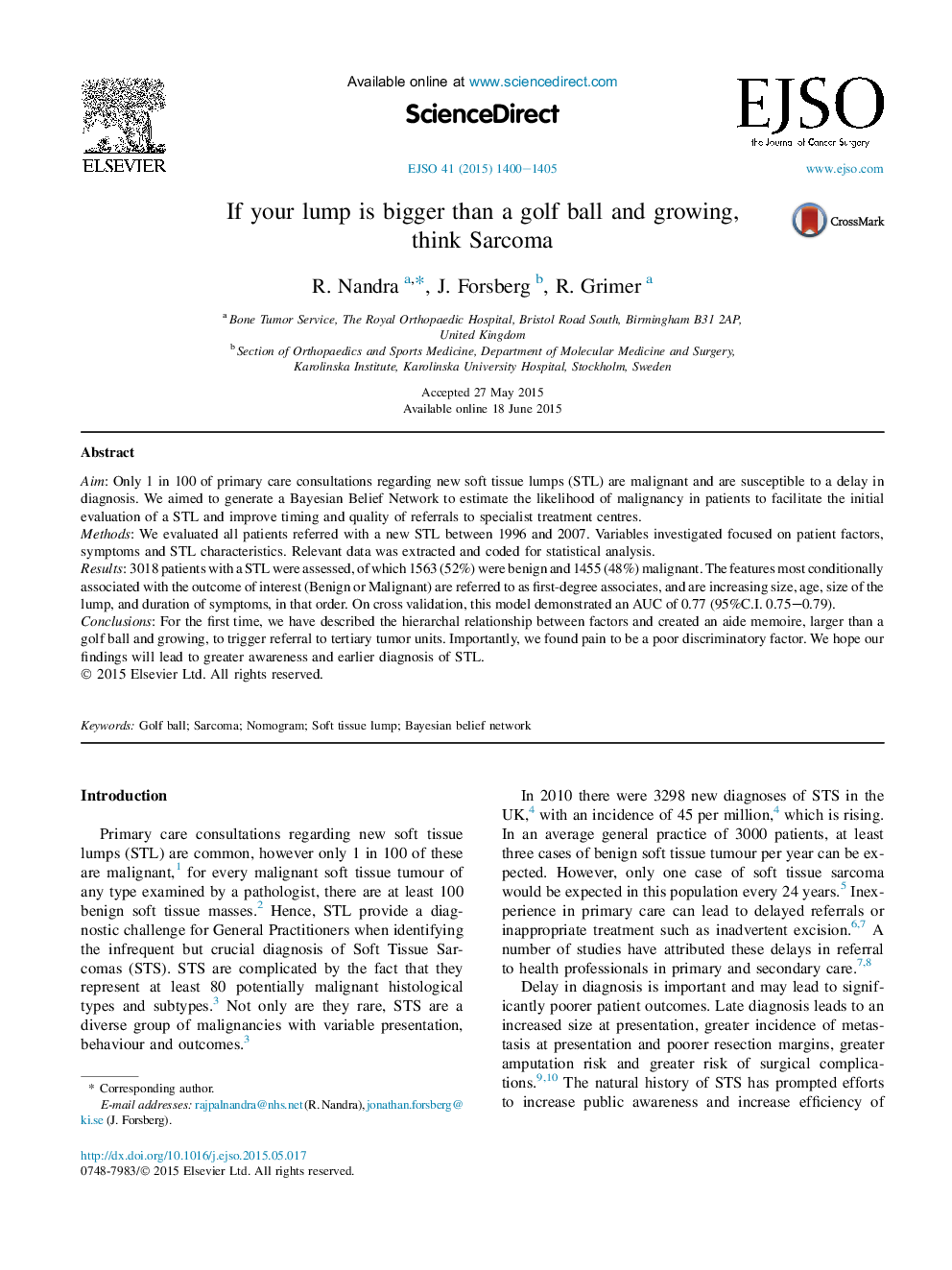| Article ID | Journal | Published Year | Pages | File Type |
|---|---|---|---|---|
| 6191143 | European Journal of Surgical Oncology (EJSO) | 2015 | 6 Pages |
AimOnly 1 in 100 of primary care consultations regarding new soft tissue lumps (STL) are malignant and are susceptible to a delay in diagnosis. We aimed to generate a Bayesian Belief Network to estimate the likelihood of malignancy in patients to facilitate the initial evaluation of a STL and improve timing and quality of referrals to specialist treatment centres.MethodsWe evaluated all patients referred with a new STL between 1996 and 2007. Variables investigated focused on patient factors, symptoms and STL characteristics. Relevant data was extracted and coded for statistical analysis.Results3018 patients with a STL were assessed, of which 1563 (52%) were benign and 1455 (48%) malignant. The features most conditionally associated with the outcome of interest (Benign or Malignant) are referred to as first-degree associates, and are increasing size, age, size of the lump, and duration of symptoms, in that order. On cross validation, this model demonstrated an AUC of 0.77 (95%C.I. 0.75-0.79).ConclusionsFor the first time, we have described the hierarchal relationship between factors and created an aide memoire, larger than a golf ball and growing, to trigger referral to tertiary tumor units. Importantly, we found pain to be a poor discriminatory factor. We hope our findings will lead to greater awareness and earlier diagnosis of STL.
